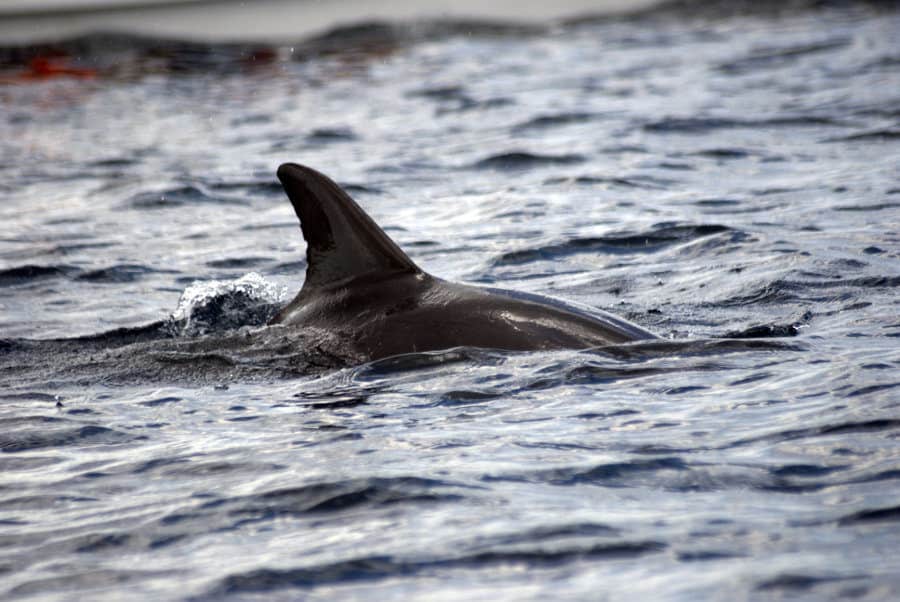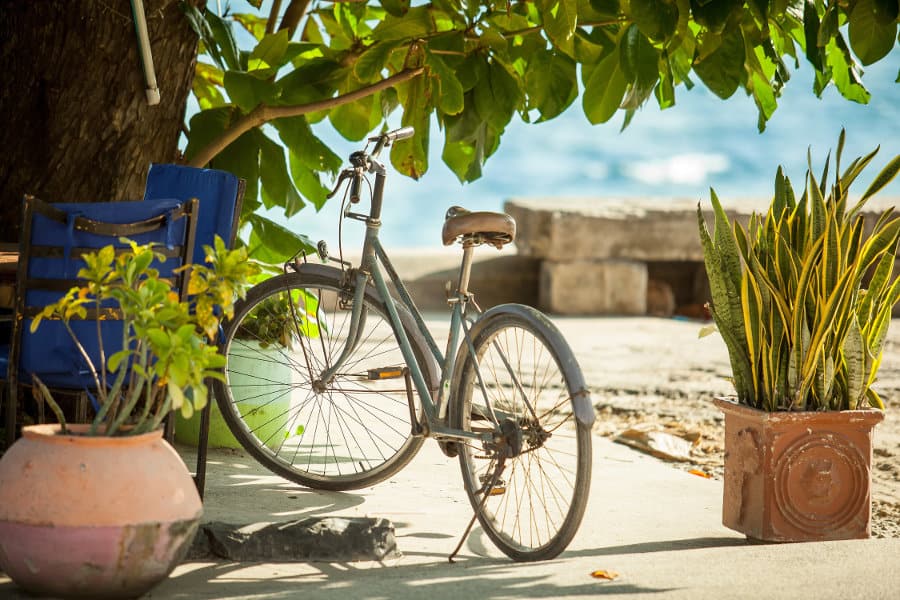Zanzibar beaches defy the imagination.
White sand squeaks beneath your feet. Tropical forests provide a glorious backdrop. Turquoise waters are warm and calm.
Zanzibar has some of the world’s best beaches, exceptional stretches of Indian Ocean paradise with barely any other footprints. Plus, a vacation here is great value compared to more established Indian Ocean islands, like in the Maldives and Seychelles.
Zanzibar may be small but each side of the two islands has a different kind of beach. So read on for the complete guide to Zanzibar beaches and the best places to go in the archipelago.
Read This First – Zanzibar Overview
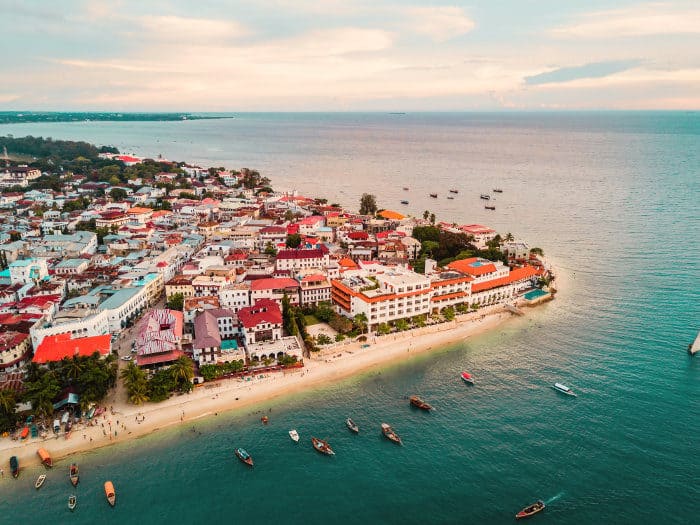
Before diving into beachside paradise it’s important to understand the Zanzibar map.
Zanzibar is part of Tanzania, a country in East Africa. There are two different islands. Both have outstanding beaches and are only 50 km or so from the mainland.
Unguja is the largest island and receives 95% of the tourism. It’s home to World Heritage Stone Town, an ancient trading history, and an excellent variety of beaches and resorts. When many people say Zanzibar they actually mean Unguja.
It takes two to three hours to travel north to south, tip to tip, across the island. West to east is a little shorter. So you can get all around Unguja in a day, but it’s going to be a long day, perhaps too long if you just want to visit a beach.
Pemba is a little smaller and often forgotten. It’s more remote, harder to get to, and there isn’t too much accommodation choice. It also offers exotic Zanzibar beaches.
Pemba’s resorts are dotted along the island’s western coast. The roads are not in great shape and guests tend to spend most of their holiday in and around the resort.
Unguja is a low-laying coral atoll surrounded by shallow, tropical waters. In contrast, Pemba is a more conventional island, surrounded by deeper Indian Ocean waters.
Best Beaches in Zanzibar – Complete Guide 2022 (& Beyond)
Other than a few private islands, Zanzibar does not have any private beaches. This is Africa and everything is shared, so swanky resorts can’t claim an exclusive stretch of white sand.
That means you can walk along the coast and enjoy many different beaches, even those dominated by large resorts. So where do you go?
Western Unguja around Stone Town

Western Unguja does not have the best Zanzibar beaches. Although a handful of resorts are spaced out along the coast, there’s none of the exotic allure found elsewhere on the island.
You can visit Zanzibar beaches like Bumbwini, Mangapwani and Fumba, but don’t expect the Zanzibar magic. However, these can be popular destinations as they are so close to Stone Town.
An exception is the private islands located close to Stone Town, off the western coast. These are beautiful and very exclusive, but pretty much unaffordable and not great value versus accommodation elsewhere.
Northern Unguja – Zanzibar’s most famous and developed beaches
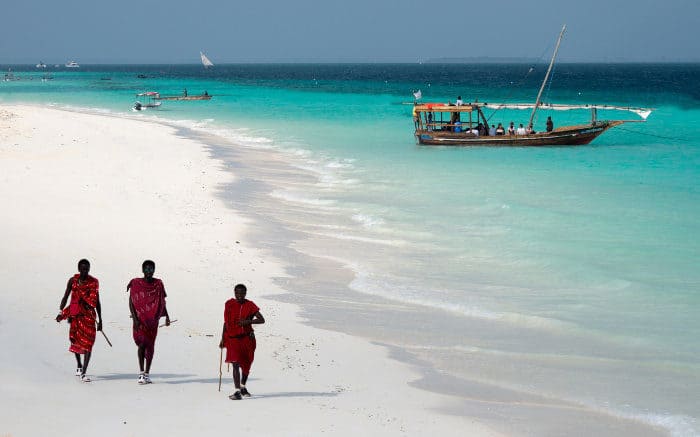
Unguja’s northern tip is mesmerising. Coral cliffs stand majestically above white sand and the water is beyond cerulean.
These Zanzibar beaches helped put the island on the traveler map and they still wow everyone who visits.
Nungwi is Zanzibar’s most developed and most popular beach resort town. It offers the widest choice of accommodation and there’s something for all budgets.
Nungwi is not really crowded but it’s certainly not empty. There are a few annoying beach touts and some of the bad stuff that comes with tourism. This intensifies during the biggest high season of mid July to early September. Also note that beachfront accommodation is pretty expensive so it’s harder to actually stay on the beach in the north.
You will find sublime feet-in-the-sand-style fish restaurants, Masai walking across the sand, and a tropical atmosphere you won’t want to leave.
At low tide the Nungwi beach connects with Kendwa beach. At high tide it’s a real adventure, wading through water and swimming between the two places.
Kendwa is quieter and there’s far more space on the sand. It’s a great choice as you can enjoy loads of tranquility, then walk or taxi to Nungwi for a wider choice of restaurants and bars.
Kendwa is home to the largest and most famous backpacker resort on the islands – Kendwa Rocks. However, such is the appeal of this Zanzibar beach, Kendwa Rocks has evolved into a boutique-style resort for people of all ages, far beyond the backpacker hub it once was.
Northeastern Unguja – Zanzibar beaches for a resort-style holiday

Remote and pretty, northeastern Unguja has three resort-style villages with mostly upmarket accommodation: Kiwengwa, Pongwe and Uroa.
These three are very similar, offering nice beaches, comfortable accommodation, and a real sense of serenity.
Resorts are relatively good value and are favoured by people seeking to spend almost all their time in the resort. In general, this part of Zanzibar is loved by older and senior travelers seeking a place to unwind after their African safari.
Southeastern Unguja – Zanzibar’s best beaches

From Pingwe to Jambiani and beyond, southeastern Unguja is one uninterrupted beach. It’s pure white sand lapped by a huge tropical lagoon. And it’s so broad. You don’t battle over a thin strip of beach here, but savour a landscape with very few other people.
Southeastern Unguja is the very image of Indian Ocean beach paradise, with tropical forests back-dropping the sand and quirky coral structures adding further visual pleasure.
The lagoon is like a tropical bath and great to swim in, even if you can’t swim very well. It’s also emerging as a prized kitesurfing destination.
This part of Zanzibar has preserved its local feel, so you can still see small villages and traditional culture, or at least experience the wonderful local hospitality.
Pingwe and Dongwe are really out of the way, home to a handful of honeymoon-type retreats and the iconic Rock Restaurant.
Bwejuu is slowly emerging as a destination although there’s not too much choice of accommodation just yet.
Paje is the kitesurfing destination and gets popular with kitesurfers from June to August. Outside these months it’s a lovely little destination, with a handful of beachfront shacks.
Jambiani has a traditional village feel and you’ll see fishing boats rocking on the lagoon. It’s a place to escape the world while still enjoying local Swahili culture.
Everything in southeastern Unguja is on the coast, so even the cheapest accommodation is beachfront. Paje and Jambiani are exceptionally good value if you’re looking for a beach break without the crowds.
Swimming with dolphins on Zanzibar’s southern tip
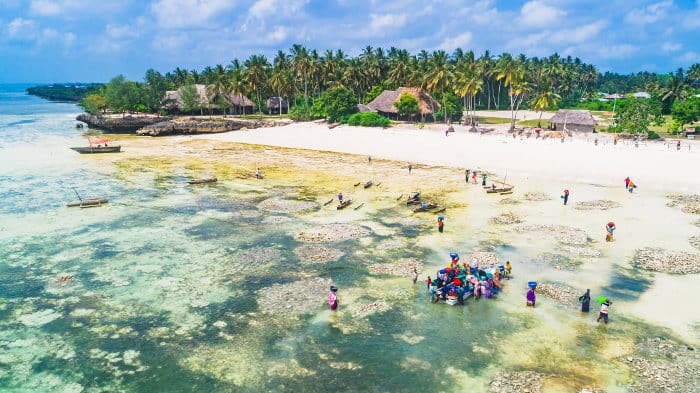
Travel to Zanzibar’s far south and you will be enveloped by nature. Colobus monkeys call from the forests and dolphins swim in Kizimkazi Bay.
The beaches here are nowhere near as beautiful as other Zanzibar beaches. However, you can swim with wild dolphins in Kizimkazi, as the video explains.
Other than the dolphins, this isn’t an ideal choice of place to stay. It’s far from everywhere else, the resorts are overpriced, and the beaches don’t have the same wow factor.
Zanzibar Beaches on Pemba Island

Gaze out from eastern Pemba and the Indian Ocean rolls for infinity. It’s dark, blue, and a little frightening, nothing like the turquoise tones found around Unguja.
Pemba’s best beaches are all found on the western coast, where a myriad of small bays and pools are interrupted by mangrove forests and pinkish hues. All the island’s resorts and hotels are found on this side.
Pemba’s northwestern tip is a lot like southeastern Zanzibar, characterised by a long stretch of wide sand. It’s a classic beach destination, where you can walk for hours without leaving the beach.
Lagoons and mangrove forests create very different Zanzibar beaches here. They separate the sand into small bays and a maze of islets, some of which only emerge at low tide.
There are dozens of beaches here. Varying from warm pink to glistening white, these Zanzibar beaches are so pristine they are yet to feature on Instagram.
Getting to them can be a challenge, as they are not connected and mangroves are impossible to walk through!
Boat tours are the best way to explore this coastline as most of the Zanzibar beaches are not even accessible by road.
Pemba’s resorts are on the pricey side, but you do get real privacy and Zanzibar beaches that are virtually empty. On this side of this island it’s unlikely you’ll see anybody else, so it’s a haven for romantic breaks.
Zanzibar Beaches Through the Year
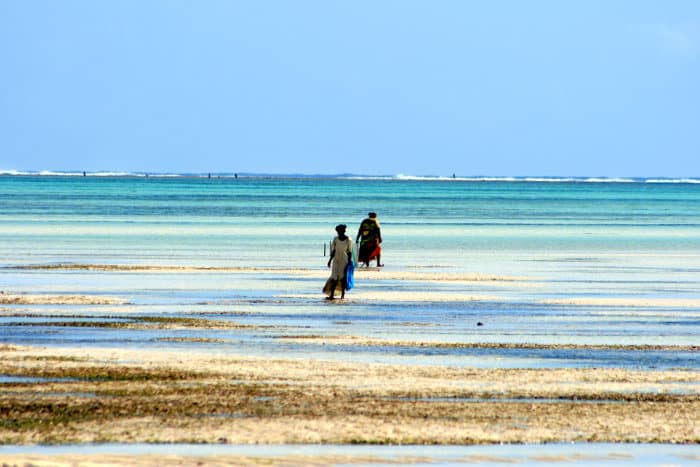
The African sun can be really fierce. From January to December you will get a sunburn on Zanzibar’s beaches, if you don’t cover up appropriately.
Everyone wants to visit the beach when it’s sunny. So the main high season in Zanzibar is during the long dry season of June to September.
Don’t discount the rainy season. After a week on a Zanzibar beach you will look forward to a cloudy sky and a little respite from too much sun. And during the rainy season you can enjoy much better prices.
Zanzibar beaches are magical every day of the year. They even look good in a tropical storm. Hopefully this guide has inspired you to visit, or helped you decide which of Zanzibar’s beaches is best for you.
Safari Njema! (Bon Voyage!)


